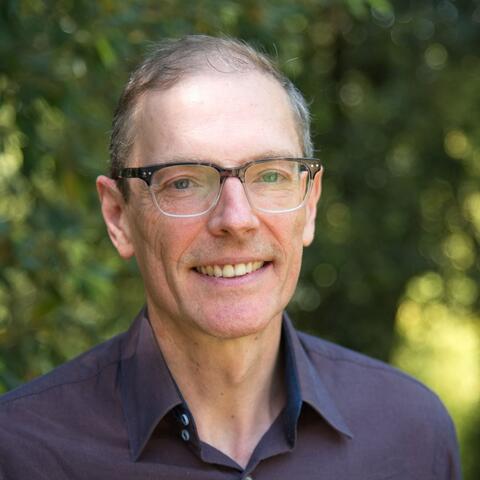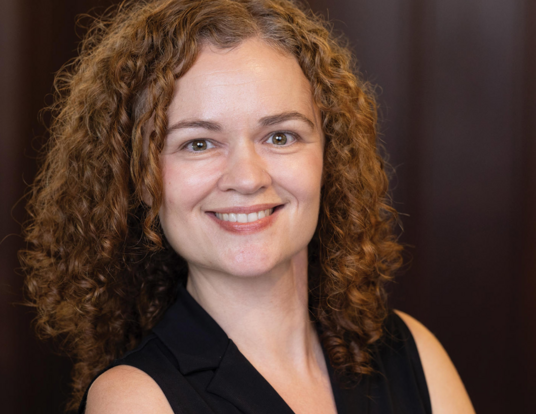Aiming High
Roy raises consciousness of racial injustice and of the contributions of Black thinkers
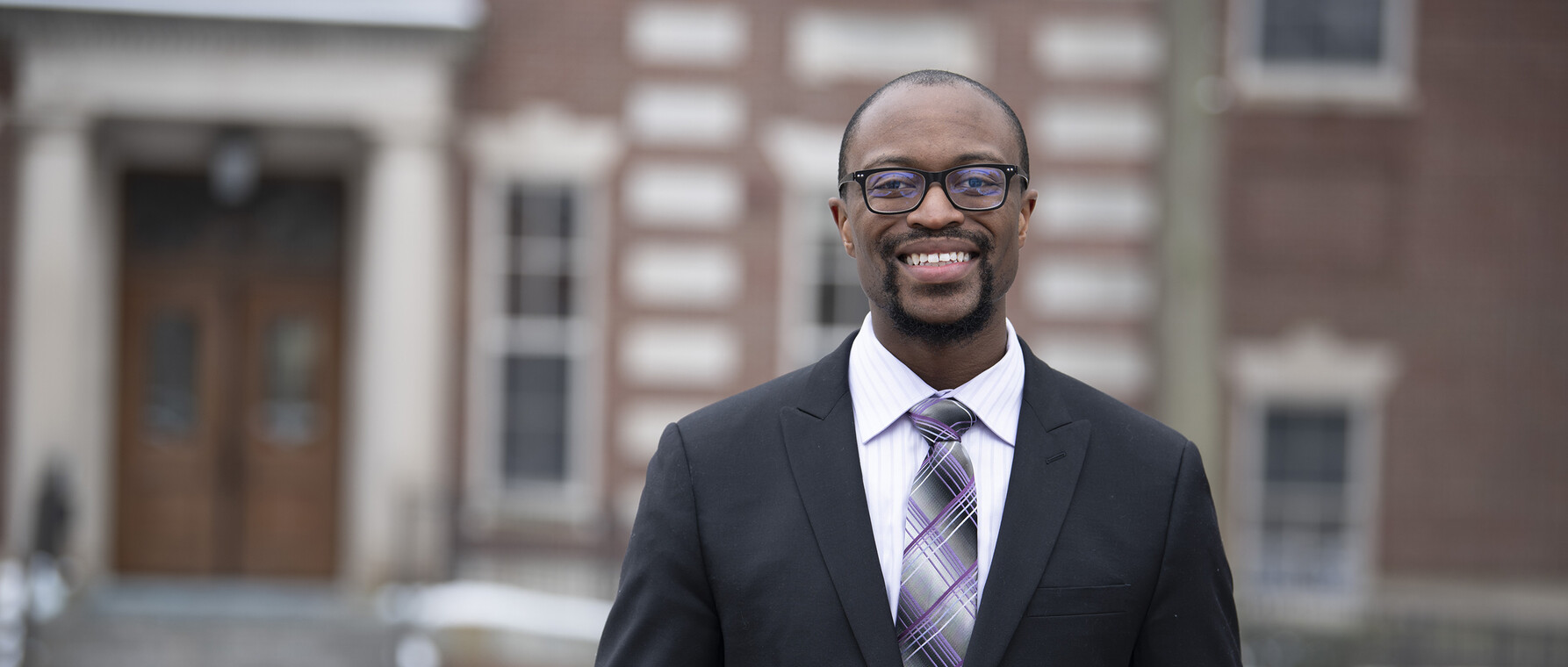
Keidrick Roy was seven years old when the police pulled the family car over in Tyler, Texas. He remembers waking up in the back seat of his father’s light brown Lincoln Continental surrounded by the flashing red and blue lights of multiple police cars. An officer told his father, a Black man, that the Lincoln matched the description of a car that had been involved in a robbery. He asked him to get out of the car and show his identification while Keidrick and his mother looked on.
Roy’s father complied and threw his wallet down on the Lincoln’s hood.
“Look, I have my kid in the back!” he said furiously.
The encounter ended without incident—possibly because the wallet contained a military identification card—and the family made it home to El Paso. But years later, as national attention focused on the killings of African Americans by police, Roy realized that things could easily have gone differently that night in Tyler.
“Amid the highly publicized killings of unarmed black people—Trayvon Martin, Freddie Gray, Eric Garner, Tamir Rice—I thought of everything that could have happened that night,” he says. “I was like, ‘Oh my goodness.’ So, my consciousness of race and racism has always kind of been there.”
From the US-Mexico border, to the Air Force Academy, and even to the bottom of a nuclear missile silo, Keidrick Roy has brought this consciousness with him—along with a passion for education and racial justice. Today, as a PhD student in American studies at Harvard’s Graduate School of Arts and Sciences, Roy works to give voice to Black, indigenous, and people of color (BIPOC) through research that reveals their long-overlooked contributions to enlightenment thinking and through his teaching, activism, and art.
Questions from the Bunker
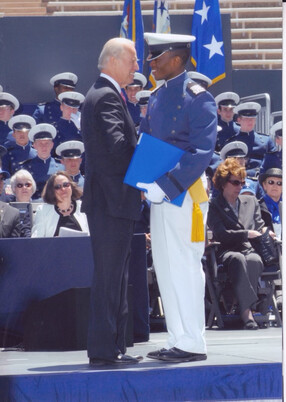
The only child of a third-grade schoolteacher and a career sergeant in the US Army, Roy gravitated both to education and to military service at an early age. He was only 17 when he enrolled at the prestigious United States Air Force Academy in Colorado Springs, Colorado. By the time he was 19, the cadet was teaching classmates how to fly gliders. A couple of years later, Roy was the top English student in his class. The Academy offered him a scholarship to pursue his master’s degree at the University of Arizona if he agreed to return to Colorado Springs and teach after an intervening tour of duty. Halfway through the program, Roy found out what that tour would be: deputy commander of a missile combat crew at a strategic nuclear site in Wyoming. Soon after he reported for duty, the Air Force put Roy’s burgeoning gifts as a teacher and trainer to use in the effort to prevent disaster.
“I was a missile combat crew commander and also a nuclear procedures evaluator,” he says. “I was charged with developing procedures to train our forces and to evaluate their effectiveness. We had to identify the cause of human error and reduce it through training programs. A single mistake could be catastrophic.”
The usually buoyant Roy calls his tour in nuclear and missile operations “sobering” and says he wrestled often with ethical and ultimate questions during his 24-hour shifts in an underground bunker. During his rest time away from the console, he immersed himself in the writings of great thinkers, particularly on the issues of justice, democracy, and racism.
“When you’re down in the silo, you do have time to sleep in a bed module and relax a little,” he says. “I read [Harvard Professor Cornel West’s] Race Matters, Democracy Matters, and a big anthology of his writings. There was a lot I was trying to work out.”
After four years, Roy had achieved the rank of captain in the Air Force and commanded a flight crew of 25. His tour of duty completed, he left Wyoming to resume his career trajectory as a teacher in the Air Force Academy’s Department of English. When he arrived there, however, he noticed few courses dealt extensively with race or ethnicity. Roy decided to offer his own, including classes on race and monstrosity; race, gender, and technology; and on the erasure of the human.
“All but one or two of the courses I taught at the Air Force Academy were of my own design,” he says. “While we shared a common set of core set of texts, instructors were able to supplement the curriculum or propose new classes. I thought it was really important to talk about race and its impact on how we understand our country. I wanted our future leaders to learn empathy and compassion. I wanted them to look at the people we are fighting against and at the people they're serving with from different races and different backgrounds and say, ‘Hey, we're all human beings—we all have dignity.’”
Roy’s course on “Race, Difference, and Monstrosity” received a 5.9 rating from students out of a possible 6.0. By 2017, he had won the Air Force Academy’s Outstanding Academy Educator Award, its Outstanding Research Award, and its Outstanding Instructor Award. He loved teaching. His students loved his classes. But the questions with which Roy had wrestled during his shifts in an underground missile silo were still with him—so much so that he left the Air Force to confront them.
“I wanted to work through a lot of issues that I was thinking about when I was hundred feet underground in these nuclear silos reading philosophy and history,” he explains. “I was thinking about what it meant to be a service member, to be a Black service member, and to be in the Air Force doing the kind of job that I was doing. I came to GSAS to explore these kinds of deeper, more existential questions, especially as it comes to establishing racial and social justice.”
I wanted to work through a lot of issues that I was thinking about when I was hundred feet underground in these nuclear silos reading philosophy and history.
Healing the Brokenness of Our Humanity
At GSAS, Roy examines enlightenment values from the perspective of historically oppressed peoples. Specifically, he looks at the ways that writers and thinkers like the poet Phyllis Wheatley and the abolitionist Frederick Douglass expanded and transformed enlightenment notions of liberty, equality, justice, reason, and humanism.
“Wheatley and Douglass both point to the importance of creativity and imagination in creating a better world,” Roy says. “They believed these ideas should be central—rather than peripheral—to understanding who we are as humans and to how we might go about rebuilding society into one that is more just and equal.”
The title of Roy’s dissertation, Jefferson’s Map, Douglass’s Territory: The Black Reconstruction of Enlightenment in America is inspired by Douglass’s famous 1852 speech “What to the Slave Is the Fourth of July?” In it, Douglass takes founder Thomas Jefferson to task, observing that the values of equality and democracy outlined in the Declaration of Independence do not reflect the political, moral, and spiritual geography of a country dedicated to the institution of slavery.
“I’m translating a bit on his behalf,” Roy says, “but Douglass basically says that the moral ‘map’ that the Declaration of Independence represents does not line up with the reality of slavery and oppression existing throughout the territory of the United States. So, how do we bring the map and the territory into a closer relationship with one another?”
Roy says that African American writers in between the Revolution and the Civil War struggled to reconcile the concepts of liberty, equality, and justice with the reality of slavery. Douglass, in his later speech, “Pictures and Progress,” says that these poets, prophets, and reformers “are all picture-makers—and this ability is the secret of their power and of their achievements. They see what ought to be by the reflection of what is, and endeavor to remove the contradiction.
“In a lot of ways, my dissertation is that endeavor to remove the contradiction between what ought to be, and what is,” Roy says.
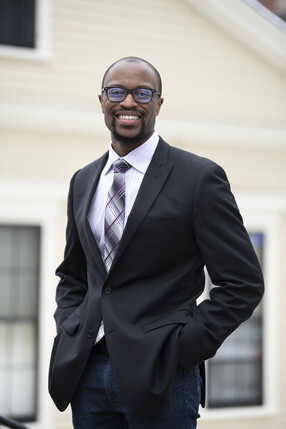
Roy’s advisor, Sumner R. and Marshall S. Kates Professor of English and of African and African American Studies John Stauffer, calls him “an immensely original thinker, elegant writer, and a stunning orator,” whose reading of Frederick Douglass advances the field of American Studies and has garnered national attention.
“I feel as though I've learned as much from Keidrick as he hopefully has from me,” Stauffer says. “He's also an absolute joy to be with. He’s always gracious and inspiring and I always learn something new from him.”
Stauffer points out that Roy’s work goes beyond his doctoral research—and beyond the boundaries of the academy. He is currently at work on an exhibition for Harvard’s Houghton Library on the Nazi state and its creation of the racial, ethnic, political “other.” (“It will be a major exhibition,” Stauffer says, “and should receive international attention.”) Additionally, Roy is the executive producer of, We Are Here Too, a documentary film on the way that four women artists of color in neighboring Somerville, Massachusetts navigated the COVID-19 pandemic and the simultaneous movement for racial reckoning. (The film premieres at the Somerville Community Growing Center on June 16.)
“We want to underscore how these women are using their brushes, their cameras, and their voices to respond to the pandemic, the nationally televised racial violence, and the growing uncertainty and unrest in our country,” he says of his documentary work. “The film will highlight how people are using art to cope with the overlapping pressures that are conditioned by our historical moment.”
Looking to the future, Roy says that he wants his work both inside and outside of the academy to encourage others to see the world in new ways—particularly concerning issues of race and ethnicity. And at a time when civic life seems so often to play to our baser instincts, the Air Force veteran wants to help his fellow citizens aim higher in their aspirations and their interactions with one another.
“No matter what gifts you're given or what position you happen to be in,” he says, “everyone has something to contribute that can enrich our understanding of how we see and interact with one another. That’s why I will always have a public-facing dimension to my teaching and research. I want to inspire others to take on projects they believe will help to heal the brokenness of our humanity.”
Photos by Tony Rinaldo and courtesy of Keidrick Roy
Get the Latest Updates
Join Our Newsletter
Subscribe to Colloquy Podcast
Simplecast


